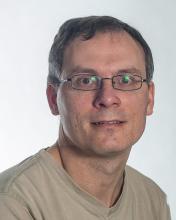The Embedded CSE (eCSE) software development programme
14 December 2023
The Embedded CSE software development programme, managed by EPCC, has been running for ten years now. To date it has supported 169 projects (100 projects under the previous ARCHER programme and 69 so far under ARCHER2) with another batch of proposals currently under review.
The Embedded CSE (Computational Science and Engineering) software development programme ran first within the ARCHER UK National Supercomputing Service and for the last few years within the current ARCHER2 service, which is hosted and operated by EPCC. Across the two services a total of 1633 person months (equivalent to around 136 person years) have been awarded to develop ARCHER and ARCHER2 software. For the most recent call, GPU development was also added to the remit of eligible software development work.
Project reports
When a project finishes, the PI and other project team members produce a final report. Two sections of this are of particular interest here. Firstly, a short publishable summary is produced which is published on the ARCHER2 website. This is a great way to see the range of projects we have had and what they have achieved. The reports are available at: https://www.archer2.ac.uk/ecse/reports/
In addition the team also produces a technical report, which gives more technical detail on the work carried out. These reports can be found linked in from the above summaries, and most also have a DOI (Digital Object Identifier) registered within the ARCHER2 Zenodo space: https://zenodo.org/communities/archer2
Many projects also give webinars. See the training section of the ARCHER2 website for details: https://www.archer2.ac.uk/training/materials/webinars
Further information
More information on the eCSE programme can be found on the ARCHER2 website: https://www.archer2.ac.uk/ecse/
For further information please do get in touch with the ARCHER2 service desk: support@archer2.ac.uk
Preview image taken from eCSE report "Achieving the sustainability and scalability of numeric-atomic-orbital-based linear response and electron-phonon functionality in FHI-aims". See: https://www.archer2.ac.uk/ecse/reports/eCSE01-16/

